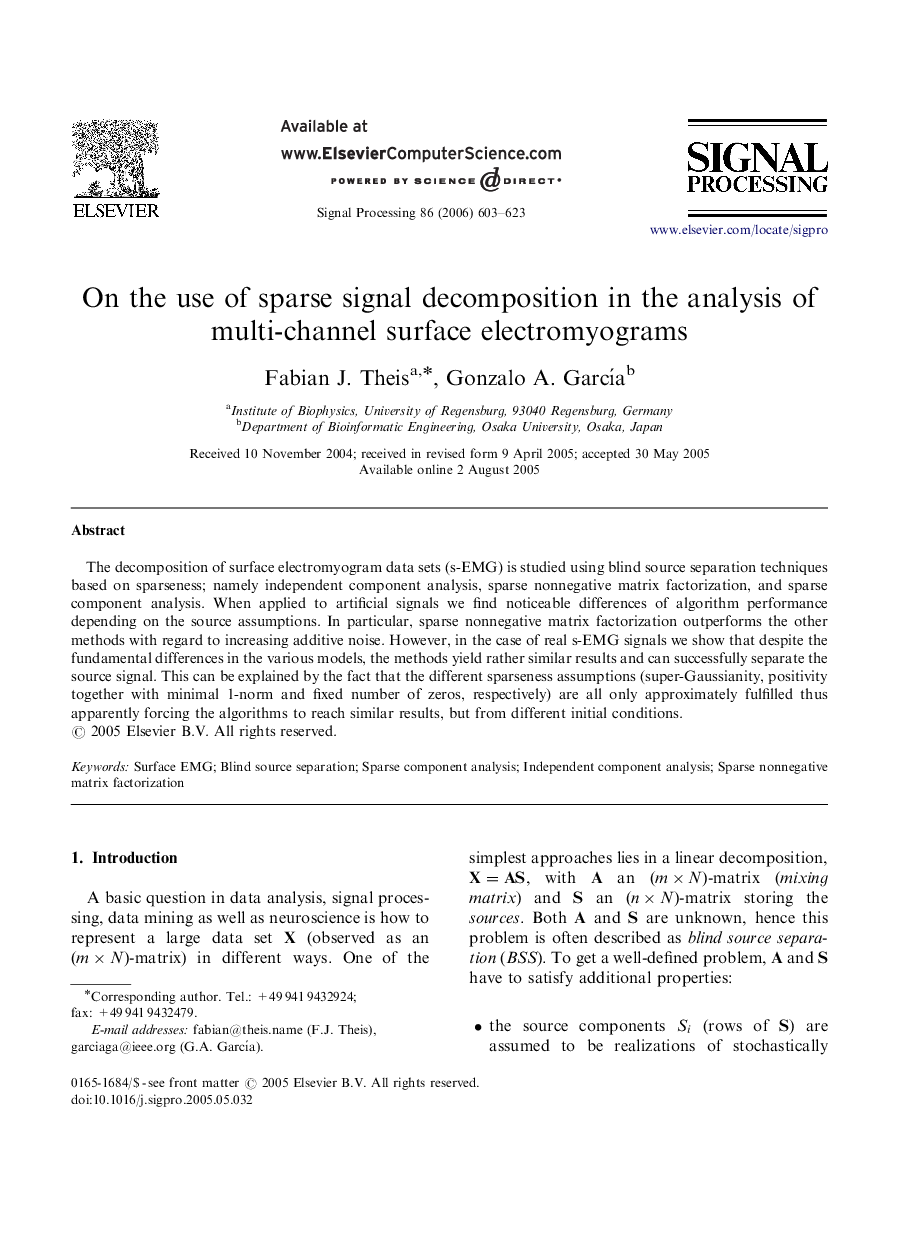| Article ID | Journal | Published Year | Pages | File Type |
|---|---|---|---|---|
| 562041 | Signal Processing | 2006 | 21 Pages |
The decomposition of surface electromyogram data sets (s-EMG) is studied using blind source separation techniques based on sparseness; namely independent component analysis, sparse nonnegative matrix factorization, and sparse component analysis. When applied to artificial signals we find noticeable differences of algorithm performance depending on the source assumptions. In particular, sparse nonnegative matrix factorization outperforms the other methods with regard to increasing additive noise. However, in the case of real s-EMG signals we show that despite the fundamental differences in the various models, the methods yield rather similar results and can successfully separate the source signal. This can be explained by the fact that the different sparseness assumptions (super-Gaussianity, positivity together with minimal 1-norm and fixed number of zeros, respectively) are all only approximately fulfilled thus apparently forcing the algorithms to reach similar results, but from different initial conditions.
